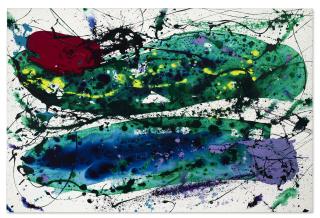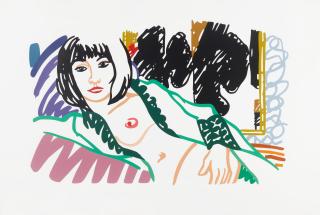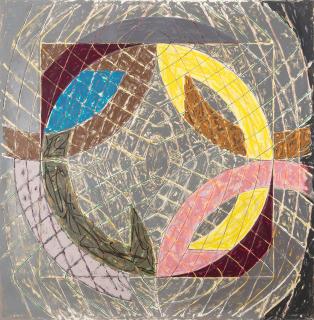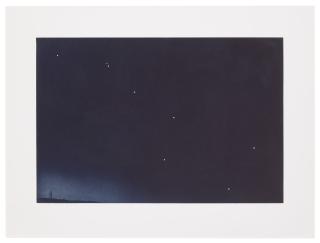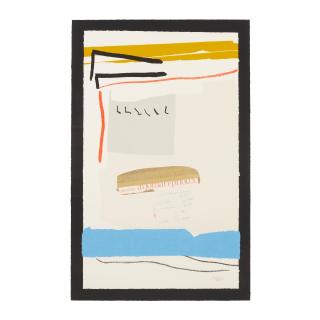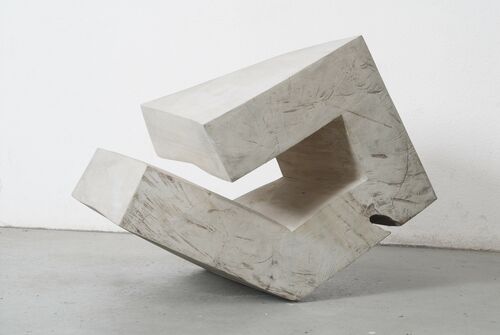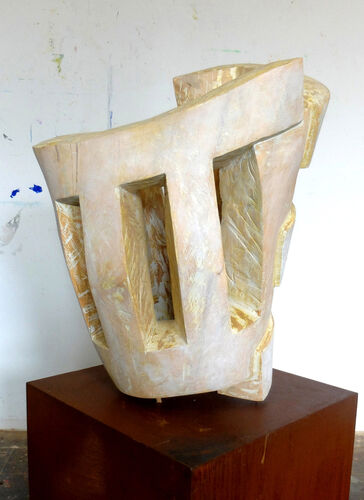Claes Oldenburg Stockholm 1929 - 2022 New York City
The artist Claes Oldenburg
- Important representative of US Pop Art.
- His Giant Objects made him internationally famous.
- Some oversized sculptures are known from various inner cities.
Claes Thure Oldenburg, born on 28 January 1929 in Stockholm, is one of the most important representatives of American Pop Art. He became known primarily for his large-format sculptural depictions of everyday objects. At the beginning of his artistic career, Claes still worked expressionistically, but soon turned away from this direction when he met Jim Dine and Allan Kaprow in 1956. Assemblages made of papier-mâché and waste products were followed by drawings and his first sculptures. From 1963 onwards, with the production of his first soft sculptures and vinyl sculptures, he came ever closer to his later well-known colossal objects (Giant Objects).
In keeping with Pop Art, Oldenburg used trivial motifs such as fast food or household and handicraft objects as models for his sculptures, which he staged spatially »as if they had fallen from the sky«. Some of these striking objects now adorn central locations in various major German cities: an upturned ice cream cone on the façade of the Neumarkt Galerie in Cologne (2001), an oversized pickaxe rammed into the ground on the banks of the river Fulda in Kassel (1982, documenta 7) or the Giant Poolballs (1977) on the edge of the Aasee in Münster.
Oldenburg has lived in the USA since his childhood. He studied at Yale University in New Haven in the 1950s. In 1956 he moved to New York, where he soon integrated himself into the local art scene. In 1959 he founded the Judson Gallery in New York together with Jim Dine, Marc Ratliff and Tom Wesselmann. In 1976 he began working with the artist and his later wife Coosje van Bruggen.
The first solo show of Oldenburg's Giant Objects and Soft Sculptures took place in 1962 at the Green Gallery in New York. A series of important exhibitions followed in renowned galleries and museums such as the Tate Gallery in London or the Museum of Modern Art in New York. He was represented four times at the documenta (documenta 4 to 7) and once at the Venice Biennale (1964). Oldenburg's early works were probably shown for the last time in an international context in 2012 as part of the exhibition Claes Oldenburg - The Sixties. Some of the works are no longer transportable due to the age of their delicate materials. Oldenburg passed away in New York City on 18 July 2022.
Der Künstler Claes Oldenburg
- Bedeutender Vertreter der US-amerikanischen Pop-Art.
- Seine Giant Objects machten ihn international bekannt.
- Einige überdimensionierte Skulpturen sind aus verschiedenen Innenstädten bekannt.
Claes Thure Oldenburg, geb. am 28. Januar 1929 in Stockholm, ist einer der bedeutendsten Vertreter der amerikanischen Pop-Art. Er wurde vorrangig durch seine großformatigen, skulpturalen Darstellungen alltäglicher Gegenstände bekannt. Claes arbeitete zu Beginn seiner künstlerischen Laufbahn noch expressionistisch, wandte sich jedoch bald von dieser Richtung ab, als er 1956 Jim Dine und Allan Kaprow kennenlernte. Auf Assemblagen aus Pappmaché und Abfallprodukten folgten Zeichnungen sowie seine ersten Plastiken. Ab 1963 kam er mit der Fertigung seiner ersten Soft-Sculptures und Vinylplastiken seinen später bekannten Kolossalobjekten (Giant Objects) immer näher.
Als Vorlage für die Skulpturen dienten Oldenburg der Pop-Art entsprechend triviale Motive wie Fastfood oder Haushalts- und Handwerksgegenstände, die er »wie vom Himmel gefallen« räumlich inszeniert. Einige dieser markanten Objekte zieren heute zentrale Orte in verschiedenen deutschen Großstädten: Eine umgestülpte Eistüte an der Fassade der Kölner Neumarkt Galerie (2001), eine überdimensionierte, in den Boden gerammte Spitzhacke am Fuldaufer in Kassel (1982, documenta 7) oder die Giant Poolballs (1977) am Rande des Aasees in Münster.
Oldenburg lebte seit seiner Kindheit in den USA. Er studierte in den 1950er-Jahren an der Yale University in New Haven. 1956 zog er nach New York, wo er sich alsbald in die dortige Kunstszene integrierte. 1959 gründete er gemeinsam mit Jim Dine, Marc Ratliff und Tom Wesselmann die Judson Gallery in New York. 1976 begann er mit der Künstlerin und seiner späteren Ehefrau Coosje van Bruggen zusammenzuarbeiten. Die erste Einzelschau von Oldenburgs Giant Objects und Soft Sculptures fand 1962 in der New Yorker Green Gallery statt.
Es folgten eine Reihe bedeutender Ausstellungen in renommierten Galerien und Museen wie etwa der Tate Gallery in London oder dem Museum of Modern Art in New York. Er war vierfach auf der documenta vertreten (documenta 4 bis 7) und einmal auf der Biennale von Venedig (1964). Oldenburgs frühe Werke waren 2012 voraussichtlich letztmalig im internationalen Kontext im Rahmen der Ausstellung Claes Oldenburg – The Sixties zu sehen. Einige der Arbeiten sind im Hinblick auf das Alter ihrer empfindlichen Materialien nicht mehr transportfähig. Am 18. Juli 2022 verstarb Oldenburg in New York City.
































